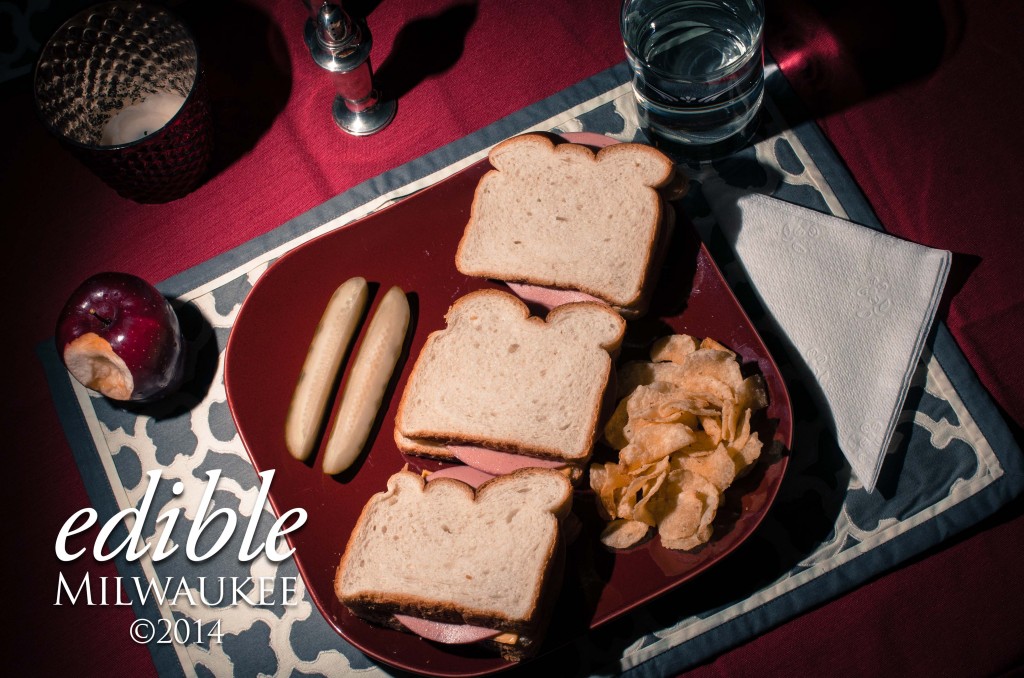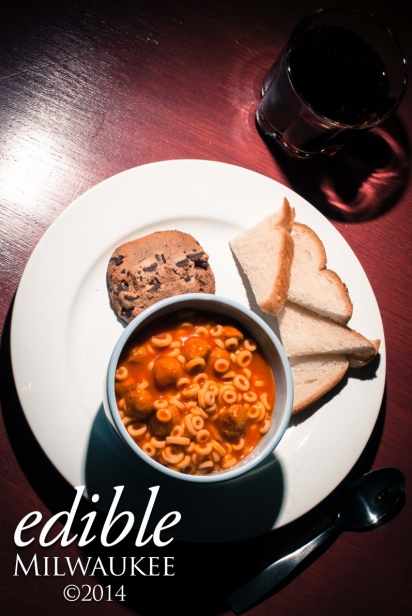The Murky Middle
One story of food insecurity offers meaning, movement towards systemic change
I have made food an integral part of my work, but I’m not a farmer, chef, or grocer. I’m a mental health worker. In both my therapeutic practice and research, I naturally think deeply about the human-food relationships inherent to individual and community experiences.
As a latch-key kid growing up on Milwaukee’s blue collar South Side, my food-centric thoughts and beliefs began to emerge. Back then, I was often more hungry than I’d like to admit, and was most ravenous when I got home from school. During these precious after-school hours, I relished my perceived freedom in the kitchen, cracking open a can of Dinty Moore Beef Stew and boiling a pot of egg noodles before retiring to the couch.
I always hid the evidence of my after-school eating. I would wash and return the dishes immediately, and bury the empty cans at the bottom of the trash bin outside. This secrecy was a result of two persistent thoughts: My mom is going to be mad that I ate before dinner, and Why am I always hungry? My thoughts cycled further: I did something bad for which I should feel guilty, and I am bad, therefore I should be ashamed. Good old chronic guilt and shame: the cornerstones of the anxiety and stress that became ever-present factors in my complex relationship with food.
My tired mother would, unknowingly, reinforce my negative self-beliefs as she scrambled to prepare dinner. “Who ate these?!” she asked as she spied an errant soggy noodle in the drain. Her irritation was justified—those were slated as the “starch” for that evening’s meal. Like many baby boomer moms, she never shared how tight our food budget was or how many of our non-perishables came from our parish food pantry. She never mentioned the words “government assistance.”
At age 19, I became a mom and quickly realized I needed to learn how to feed myself and my son with very little knowledge of the resources available to me. I heard about WIC (Women, Infants, and Children Supplemental Nutrition Program) and FoodShare from another young mother.
WIC kept us in milk, formula, and cereal, but it didn’t take long before I earned $25 a week too much to qualify for FoodShare. This was still not enough income to eat well or feel well. I felt simultaneously hungry and sluggish due to my high-starch, processed diet habits, and my son was growing tiny cavities in his baby teeth. While running between jobs, classes, and daycare, I didn’t exactly develop a mindful awareness of the sugar content in our WIC-funded Juicy Juice or our dietary staple canned pasta sauce. Familiar negative self-talk came creeping in. I compared myself to other moms, and felt inadequate.
Eleven years and countless meals later, I still find myself in the murky “middle”: having a combined family income and child support “not low enough” to qualify for FoodShare assistance, but not enough to purchase ingredients for the kind of balanced meals I would like to provide my family without stress, guilt, or financial fear. Even with solid budgeting tactics, I still feel a swell of anxiety as I approach the checkout.
The nuances of my family’s eating habits and buying behaviors later proved productive; my mother’s rationing and epigenetic stress taught me to freeze, reuse, and stretch the value of every food bit that passes through my kitchen.
I share my story for several reasons. First, I am far from alone within this socioeconomic gap; 20 percent of U.S. households with children experience food insecurity. According to the USDA’s Food Insecurity by Household Characteristics: 2012, for female-headed households with children, food insecurity is estimated at a staggering 35.4 percent (based on my own shame, I’m willing to bet that figure is considerably underreported).
Second, it explains my drive to make sense of these issues by gathering information directly from the community. My personal struggle with food and social class identity fueled my motivation in mental health and psychology. I see mental health issues through my food-stress lens. In research interviews with families experiencing compromised food access, I may ask about depression symptoms. Or, I might ask an adolescent client what foods “feel like home.”
These are not questions that mental health workers tend to ask. But the premise for them is simple: our home, neighborhood, and societal environments have an influence on our food-related thoughts, feelings, and behaviors. We often overlook the significance of the family food environment since it is so ubiquitous, a thread that weaves itself into all of our daily functioning.
Clearly this story is personal, but it suggests how accumulated thoughts and behaviors can create movement toward “big picture” change. Small shifts in research and therapeutic approaches have the power to unearth new knowledge regarding food-related chronic stress. Pearls of wisdom from my research participants may find their way into grants that land on the desks of policy makers, urban planners, and school officials. Other therapists may consider the role food plays in a client’s specific body, neighborhood, and culture as they develop treatment plans, identifying food-stress related patterns. These “maybes” bring me hope, for my clients and myself.
But mostly, I share this story because I believe that no one, regardless of socioeconomic status, nutrition education level, access to government and community resources—and whatever crazy, unique palate they developed as a kid—deserves to be shamed or judged for their eating choices and strategies. Like survivors of any adversity or trauma, we did what we needed to do to survive. Shame grows in darkness, and the less we speak about our food issues the wider class-based hunger gaps become. After all, systemic change requires mindful awareness of relationships, so why not start with one of our most intimate relationships: the food we put into our body, that becomes a part of who we are, what we do, and how well we live?
Resources
The stress involved with preparing a meal, much less a healthy one, when I returned from work at 7 p.m. with a cranky kid in tow was especially draining. Local meal programs in Milwaukee can address this by getting kids fed quickly with a free, hot, and balanced meal.
Also, these programs expose them to the reality that hunger issues transcend ethnic, age, and socioeconomic lines and are nothing to be ashamed of, thus eliminating the stigma of using meal programs for physical and social nourishment. Families who volunteer to serve get to eat, too, fostering a sense of community service in young kids.
The Gathering
(414) 272-4122 • 833 W. Wisconsin Ave
The Cathedral of St. John the Evangelist
(414) 276-9814 • 812 N. Jackson St
Milwaukee Rescue Mission
(414) 344-2211 • 830 N. 19th St
St. Ben’s Community Meal Program
(414) 271-0135 • 1015 N. 9th St
St. Vincent de Paul
(414) 649-9555 • 2610 N. MLK Dr
Agape Community Center
(414) 464-4440 • 6100 N. 42nd St
Milwaukee Christian Center Emergency Food Pantry
(414) 645-5350 • 2137 W. Greenfield Ave








